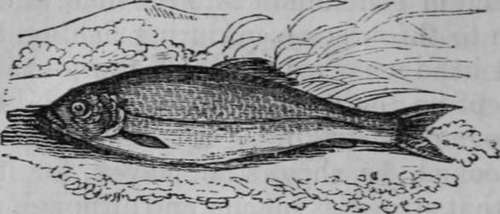A Description Of A Dace
Description
This section is from the book "The Art Of Angling Greatly Improved", by An Unknown Author. Also available from Amazon: The Art of Angling Greatly Improved.
A Description Of A Dace
In hot weather the Dace is most easily taken with an artificial fly, and prefers most the black and dun flies. They bite best from three in the morning till nine, and from four in the afternoon till night. The tackle must be fine and strong ; the rod not exceeding six feet, the line somewhat shorter of six hairs, and about two feet of silk-worm gut for the bottom links; a swan-quill float, and small hooks about No. 11 or 12, though they should be of stronger wire than that usually sold of those sizes. The most suitable baits for Dace are the oak-worm, red-worm, brandlings, gentles, flag-worms, and cadis-worms; greaves also are a good bait for Dace. Red paste is an excellent bait; but it will be advisable to take more than one kind of paste, as the Dace is a capricious fish, and in the course of a morning and evening will shun the bait which they had just taken before.

The ground-bait for Dace should be prepared of bran, a crust of white bread soaked, and worked up into balls, with little stones in the middle. In choosing a place, let it be under the wind, where the water is smooth; plumb the depth, and let the lead be about eight inches from the bottom. The ground-bait must be thrown in about four yards above the fishing station, and the bait must be placed exactly over the ground-bait. Boiled malt is also a very good ground-bait, but it must be used sparingly.
A small landing-net will be found very serviceable in landing the larger fish; draw the fish a yard or two below the fishing station, as less disturbance will be thereby occasioned in the hole.
The Dace does not bite much later than October, and March may be considered as the earliest period.
Continue to:
